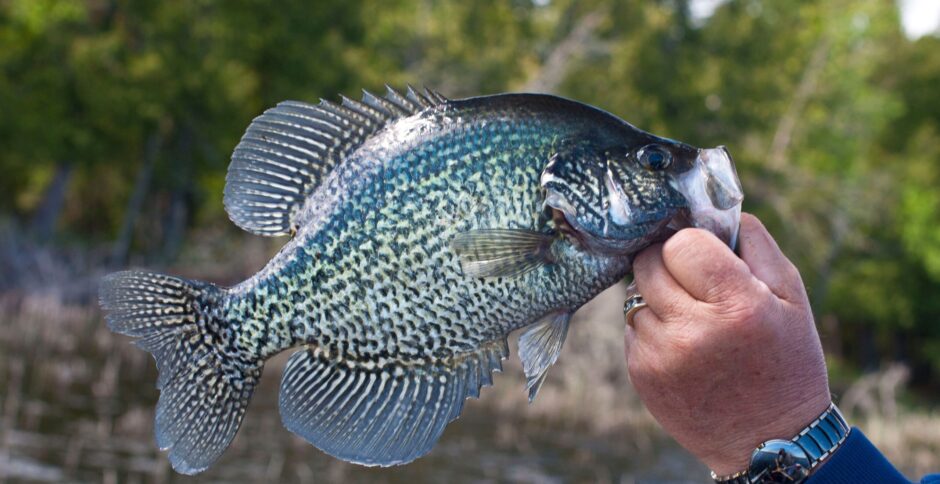During the spring, fishermen plan fishing trips all over the country for crappie. If you can time the spawn just right, you can experience some unbelievable fishing in shallow water. In the spring, crappie are very predictable and it all revolves around water temperature and the spawn.
Pre-Spawn
In the spring, crappie will move out of their deep water winter hangouts as they begin their move towards their shallow water spawning areas. As waters warm into the 50s, you can expect some of these fish to start their migration towards the shallows. During the pre-spawn, most crappie will still be much deeper than most anglers would prefer. The better crappie fishermen will be targeting most of these pre-spawn crappie in 8 to 16 feet of water near main lake and secondary points, brush piles, and along drop-offs outside of bays. The pre-spawn can be a tricky time to fish because a passing warm front could push fish into the shallows (water between 2 and 8 feet), but then a cold front will move them back out to deeper water. The spring often has several of these warm fronts and cold fronts, which makes it tougher for anglers to find these pre-spawn crappie. If you can find some fish during a warm front in the early spring, you can except to find some crappie that are willing to eat.
Spawning Crappie
As the water temperature hits 60 degrees, you can expect to start seeing some crappie moving into the shallows as the spawn begins. The spawn, which occurs every spring, gives anglers the opportunity to catch lots of big fish in a short amount of time. During the peak of the spawn, limits are very common on the better crappie lakes. You will also see more 12 to 15 inch crappie caught during the spawn than any other time of year.
The better areas to fish for spawning crappie are around timber and brush in the back of bays and coves. Shorelines with timber and brush, docks and rocks will all hold crappie once water temperatures remain consistent in the low to mid 60s. Good numbers of spawning crappie can be found in 1 to 5 feet of water once the actual spawn begins. Most anglers fish with small jigs, spinners and live bait. Jigs fished under a bobber is probably the easiest way to catch them. The bobber helps you position your bait just over the beds and you can keep your bait in the strike zone longer. When crappie are aggressive, you won’t need live bait. When the bite is finicky, you can add a live minnow to your jig or try fishing a live minnow under a bobber with a single hook.
Post-Spawn
Once water temperatures rise into the mid to upper 60s, crappie will finish the spawn and move into deeper water. Some of the good areas to fish during the pre-spawn will also be good spots to fish during the post-spawn. Fishing can be tough immediately following the spawn, especially for the bigger females. These crappie will be found in deeper water and they are often inactive for several days. Downsizing your baits and fishing slower can help you put some of these inactive fish in the boat.
A week or so after the spawn, fishing usually picks up again and you can start catching crappie on bigger jigs and minnows. As the water continues to warm, you are going to find most of the better quality crappie in deeper water following schools of bait fish.
[wpinsertshortcodead id="phdbx5f8dae2fc56be"]


